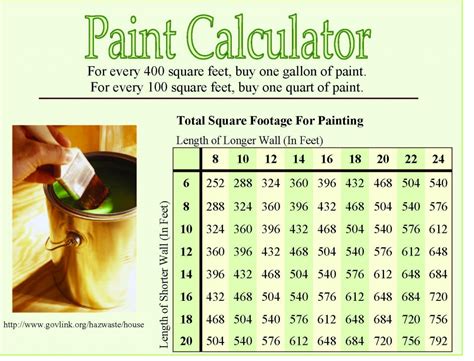The Ultimate Car Paint Calculator: Gallons Made Easy
Painting your car can be a rewarding project, breathing new life into your vehicle and potentially increasing its value. However, one of the most daunting aspects is figuring out how much paint you need. Buying too little means extra trips to the store and potential color mismatches, while overbuying leads to wasted money and leftover paint that might eventually go bad. This guide will equip you with the knowledge and tools to accurately calculate your car's paint needs, ensuring a smooth and efficient painting process.
Understanding Paint Coverage
Before we delve into the calculations, let's understand the key factor: paint coverage. Most automotive paints advertise coverage in square feet per gallon (sq ft/gal). This number indicates how much area a single gallon of paint can effectively cover with a single coat. This coverage can vary based on factors like the paint type, the application method (spray gun vs. brush/roller), and the car's surface condition. Typically, you can expect a range of 250 to 400 sq ft/gal for automotive paints. Always check the specific coverage listed on your chosen paint can.
How to Calculate Your Car's Surface Area
Accurately calculating your car's paintable surface area is crucial. There's no single formula that works for every car shape, but here’s a practical approach:
-
Break it Down: Divide your car's surface into manageable sections (hood, roof, doors, trunk, fenders, bumpers).
-
Measure Each Section: For each section, measure the length and width. For curved surfaces, make your best estimate, keeping in mind it's better to slightly overestimate.
-
Calculate Area: Multiply the length and width of each section to find its area in square feet (remember to convert inches to feet if necessary: 1 foot = 12 inches).
-
Sum the Areas: Add the areas of all sections to get the total paintable surface area of your car.
Accounting for Multiple Coats
Most car paint jobs require multiple coats for optimal color depth, coverage, and durability. Typically, two coats are recommended, but some high-performance paints may require three. Remember to multiply your calculated surface area by the number of coats you plan to apply. For example, if your car's surface area is 200 sq ft and you're applying two coats, your total area to cover is 400 sq ft.
Calculating Gallons Needed
Once you know the total area needing paint and the paint's coverage per gallon, you can calculate the number of gallons required:
-
Formula: Total area (sq ft) / Coverage per gallon (sq ft/gal) = Gallons needed
-
Example: If your total area is 400 sq ft and your paint covers 300 sq ft/gal, you'll need approximately 400/300 = 1.33 gallons. Always round up to the nearest whole gallon to ensure you have enough.
H2: What if my car has unique features or modifications?
Cars with spoilers, extensive body kits, or other modifications will require additional paint. Carefully measure these extra areas and add them to your total surface area calculation.
H2: Does the type of paint affect the calculation?
Yes, different types of paint (acrylic lacquer, urethane, etc.) will have varying coverages. Always refer to the manufacturer’s specifications on the paint can for the most accurate sq ft/gal rating.
H2: How much extra paint should I buy?
It's always wise to buy an extra 10-20% to account for any mistakes, overspray, or unexpected needs. This extra paint is a safety net that will save you potential headaches down the line.
H2: Can I use a paint calculator online?
Several online car paint calculators are available. While helpful, always double-check their results against your manual calculations to ensure accuracy. Remember that these calculators often rely on average values, which might not perfectly match your specific vehicle and paint.
Conclusion
Calculating the exact amount of car paint needed might seem complex, but with a methodical approach and the information provided above, it becomes manageable. Remember to measure carefully, account for multiple coats, and always round up when determining the number of gallons. By following these steps, you can confidently purchase the right amount of paint, ensuring a professional-looking finish without unnecessary waste.

